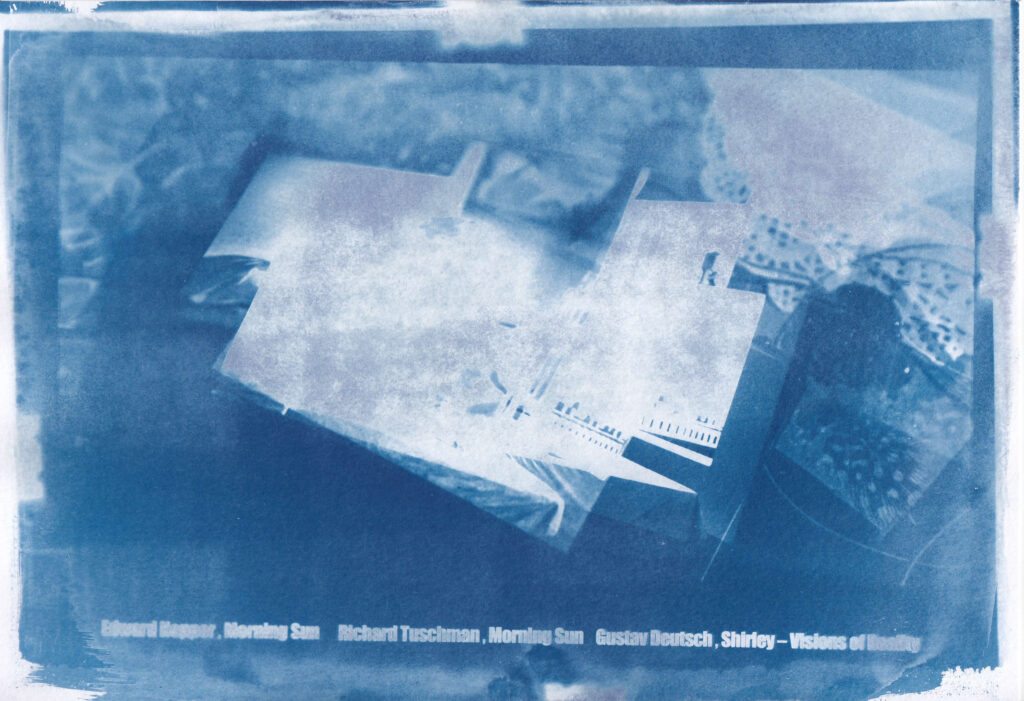Sometimes, art takes on a journey of its own, quite literally in this case. This particular artwork embarked on an unexpected adventure with the ÖBB, entrusted to a friend traveling from Linz to Vienna. Unfortunately, it decided to stay on the train and was never seen again. While the original installation is now somewhere out there, possibly enjoying the scenic Austrian railways, I’m left with a handful of cyanotype prints and, fortunately, the ideas that inspired them.
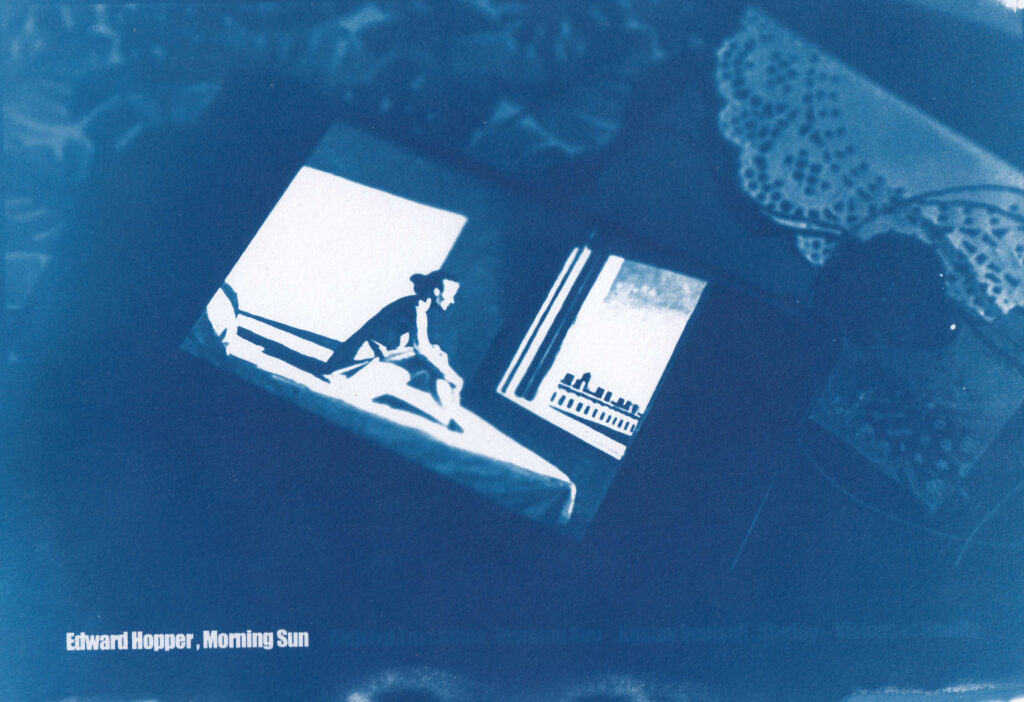
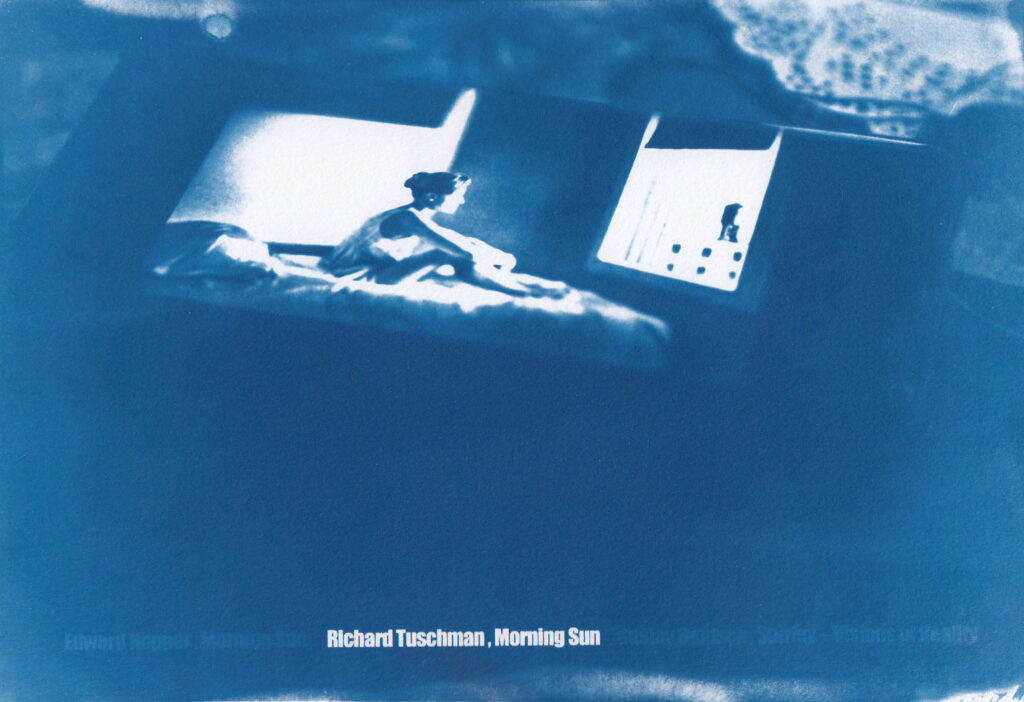
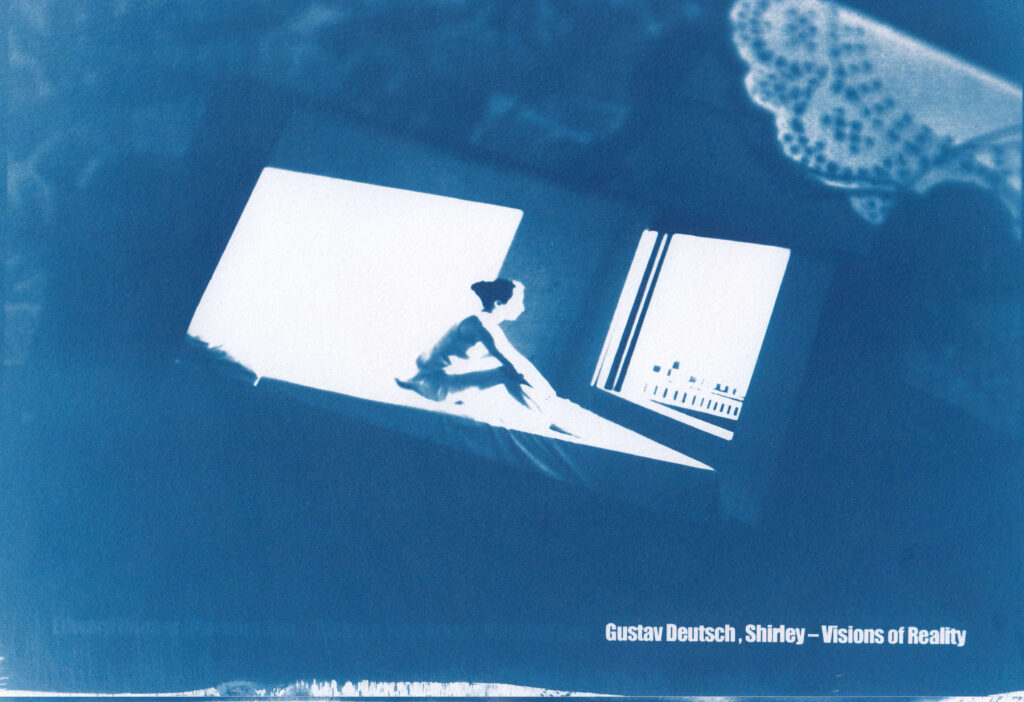
Media Ecology & Visual Culture
At the outset of this project, my focus centered on media ecology, specifically, the conscious, ecological handling of images and the overwhelming flood of visuals in our contemporary society. I was intrigued by the deliberate use of imagery and the role of visual memory within media ecology, which allows far more images to be accessible in our collective consciousness. This interconnectedness can be enriching, but it can also become overwhelming. A key aspect that captured my interest was the concept of social media detox, the conscious decision to abstain from social platforms for a period. I questioned why celebrities feel compelled to publicly announce their breaks instead of simply taking time off, highlighting the complex dependency between influencers and their followers. This dynamic sparked my exploration into the mutual influence between artworks and their audiences.
Inspired by Edward Hopper’s iconic painting “Morning Sun,” my initial ideas revolved around reenacting the artwork. However, as the project evolved, my emphasis shifted towards media reception, while still rooted in media ecology. I began to explore the aftereffects of reception and the reuse of imagery by other artists. To reference the cyanotype technique, I incorporated foldback clips and retained random elements from the cyanotype process in the final installation. A major focus was the reinterpretation of Hopper’s “Morning Sun” through various artistic techniques. The longing of the young woman in the painting served as my starting point, while the reinterpretations by other artists became my endpoint. Although my initial presentation concept was more focused on smartphones and social media, I refined the narrative to place perception itself at the center. Edward Hopper’s “Morning Sun” is a celebrated painting that has been revisited across multiple media. To create a dialogue, I juxtaposed a photomontage by Richard Tuschman and the film “Shirley” with the original painting, uniting all three through multiple exposure techniques. Images never exist in isolation, they are always part of a larger system and a shared visual memory. This collective memory is shaped by background and education, but certain images become part of the visual canon through schooling and cultural exposure. Even if not consciously named, these images are reproduced and reinterpreted. Media ecology advocates for a mindful approach to images, addressing the risks of image overload while recognizing the generative potential of the visual canon.
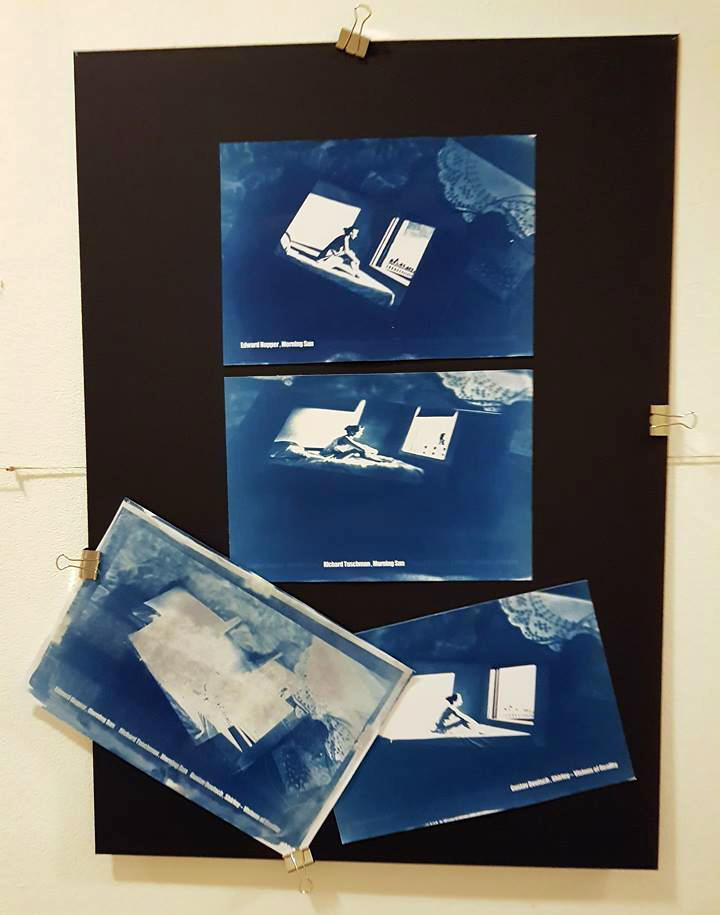
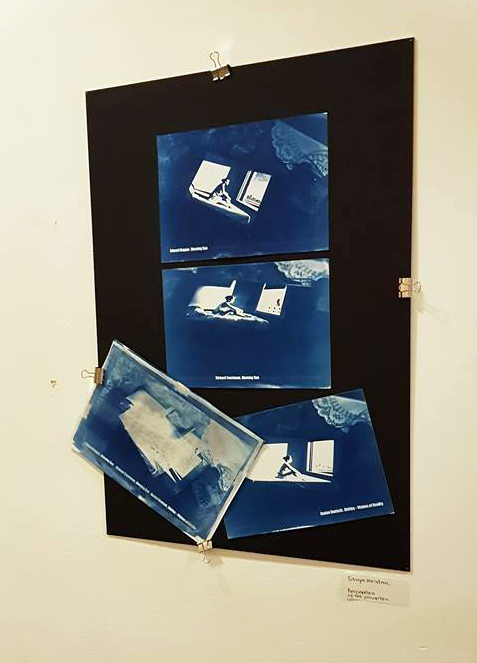
In a way, the unexpected train detour of this art installation mirrors the very heart of my project. My journey led me to restage an image and its visual quotations, ultimately creating something new from these references, just as the artwork itself found a new narrative beyond my control. This project invites viewers to reflect on the power of images, the ecology of visual culture, and the ongoing dialogue between art, memory, and perception even when the art itself decides to go off the rails.
